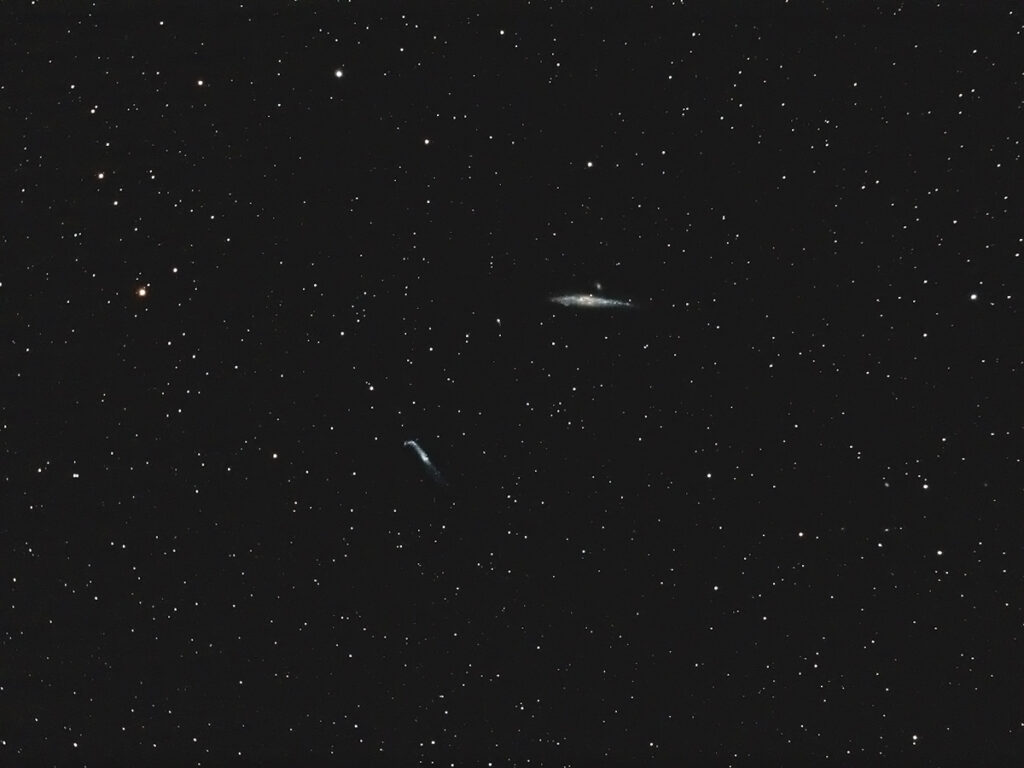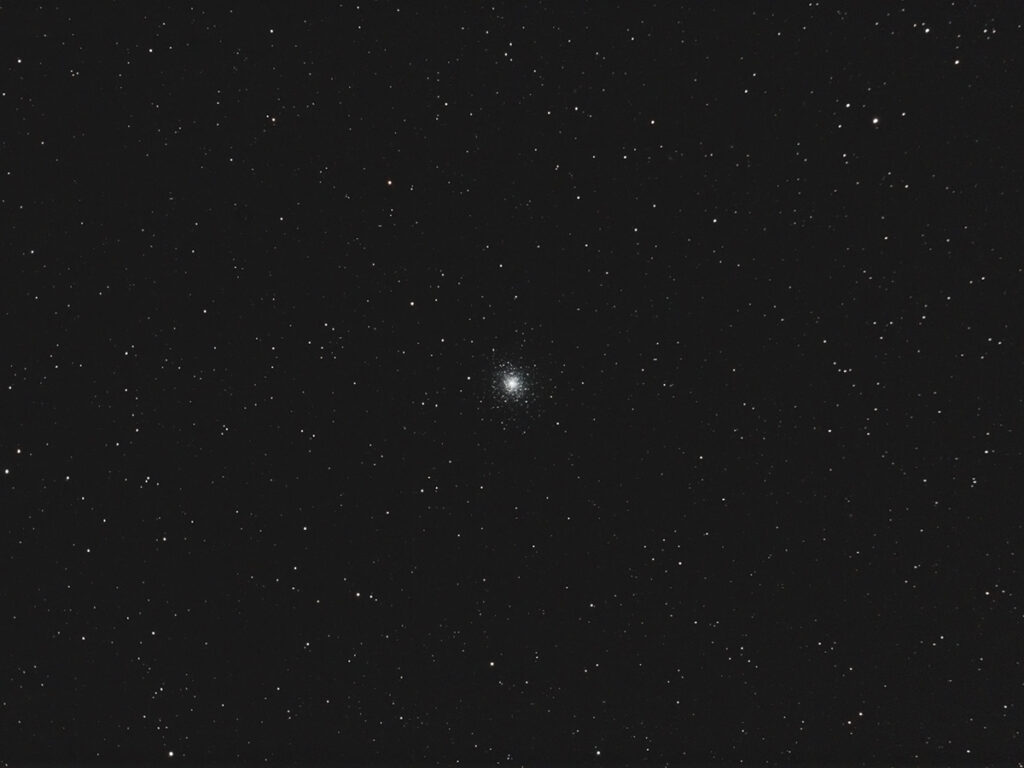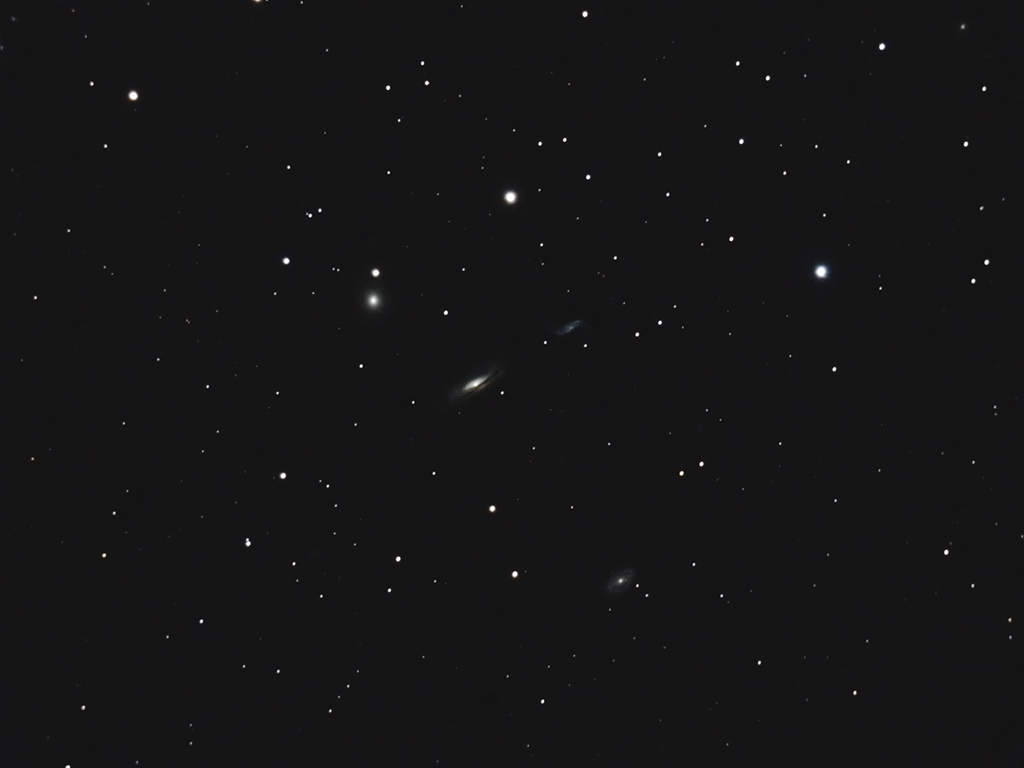
Telescope: ES Comet Hunter MN6 at f/4.8, Orion Atlas EQ-G
Camera: Baader modified Nikon 610
Filter: 2” Orion Imaging Skyglow Filter
Guide scope: Williams Optics 50mm, ASI290MM mini, PHD
Exposure: 18x120sec, ISO 400, saved as RAW
Darks: Internal (Long Exposure Noise Reduction On)
Flats: 32×1/50sec, tee shirt flats taken at dusk
Average Light Pollution: Red zone, Bortle 8, poor transparency
Lensed Sky Quality Meter: 18.4 mag/arc-sec^2
Stacking: Mean with a 2-sigma clip.
White Balance: Nebulosity Automatic
Software: Backyard Nikon, Nebulosity, Deep Sky Stacker, Photoshop
To the upper right is NGC 4631 (The Whale) a large edge-on spiral galaxy with the much smaller dwarf elliptical galaxy NGC 4627 (The Pup) just to its north. These two galaxies form an interacting pair with the smaller galaxy distorting the disk of the larger, forming its distinctive shape. To the lower left is another distorted edge-on spiral galaxy, NGC 4656, nicknamed the Hockey Stick. Just off of the tip of the hook is an edge-on spiral far off in the background.
NGC 4631 & 4656 are currently well places high in the northeast early in the evening.


Recent Comments